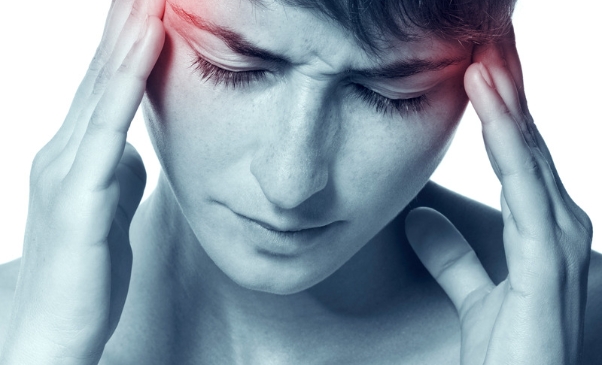A migraine with aura is a recurring headache that can happen independently or with a sensory disturbance that looks like an aura. This kind of migraine is also called a "classic migraine" by some people. When a person has one of these conditions, their hands and face may feel tingly, and they may see flashes of light or other strange things. They may also see things differently in other ways.Both migraines with aura and without aura, sometimes called "common migraines," can be treated. Aura migraines are like migraines in that you can avoid them by taking the same medicines and caring for yourself in the same ways.

Visual signs and symptomsMost people who have migraines with aura also have brief times when they have visual symptoms and signs. Most of the time, these symptoms and signs show up first in the centre of a person's field of vision and then spread outward. Here are some examples of things that might be on such a list:
- Scotomas are areas where you can't see well and are often marked by clear lines.
- You'll see that the centre of your circle has several zigzag lines coming out of it.
- stars and other bright lights
- changes to eyesight or harm to the eyesight itself
- A lot of bright lights flashed
Auras that come with migraines usually start less than an hour before the headache starts, and they usually don't last much longer than an hour before going away. Rarely, migraine auras can happen to people over 50 without the headaches that usually come with them.Causes of migraine aura:There is evidence that a chemical or electrical wave travelling through the brain causes the aura of a migraine. [Needs citation] [Needs citation] Which symptoms show up after an electrical or chemical pulse depends directly on which part of the brain it goes through.There may be an electrical or chemical wave in the parts of the brain that help process incoming sensory information and the parts that help process speech and coordinate movement. Here is a list of possible places where this will have an effect. The most common kind of aura, a visual aura, is caused by an electrical pulse that goes through the visual cortex and causes visual symptoms.Many things can cause migraines, like stress, bright lights, certain foods and medicines, insufficient sleep, menstruation, and other things. A lot of these things can also make migraines with aura happen.

When to see a doctor: There are no known risk factors for migraines with aura. However, having someone in your family who gets migraines makes it more likely that you will also get migraines. Migraine headaches are another illness that affects women more than men. People with migraines with auras have a much higher risk of stroke.Make an appointment with your doctor as soon as possible if you've recently started migraines with aura symptoms like temporary loss of vision, trouble speaking or understanding language or weakness on one side of the body. Before determining what's causing your symptoms, your doctor must determine if you have something more serious, like a stroke.Different types of Migraine auras:Migraine headaches can cause auras. They usually start between 5 and 20 minutes after the headache starts and don't last longer than an hour. Some of the most common symptoms of auras are vision changes, a strange feeling when you touch something, trouble with language, less strength, a headache in the brainstem, or a migraine with an aura that affects the retina. Migraines can also come with auras. Some people may have the same experiences repeatedly in different ways.Visual Migraine Auras:People experience a visual aura more often than any other kind of aura before, during, or after a migraine. These changes can be seen, for example, in the following:
- Lightning, stars, and other amazing things are some things you will see.
- Scotomas are areas where a person has trouble seeing.
- Parallax View
- Lightning strikes
- Parallel lines that go up and down
Coloured spots:These vision changes may start in the middle of the affected person's field of vision and then move outward towards the edges of their field of vision. Some people lose sight for a short time when they have a migraine.Physical Sensations:Some people with migraines may feel physical sensations like tingling or numbness when they have auras. They may start in one part of the face or body and then spread to other parts on the same side. All of the following are examples of how different emotions show up in the body:
- Numbness
- Extremely fragile nerves
Language Difficulty Auras:Some people have trouble talking and getting along with others before, during, or after a migraine attack. During an attack, some people have trouble getting in touch with others. Some people may have trouble making complete sentences because they don't have an extensive vocabulary, but they will still understand most of what is being said.Rare forms of auras:Auras are one of the things that set apart many types of migraine, including:
- Basilar-type migraines are infrequent headaches that come from the brainstem. Migraines of the basilar type are what these headaches are called.
- Hemiplegic migraines are headaches that make one side of the body weak or paralysed for a short time. Very few people get this kind of migraine. At times, these headaches could keep you from doing anything at all. Most people feel better after 24 hours, but it lasts up to three days.
- A retinal migraine has an aura that only affects one eye at a time. This is what makes it different from other types of migraine with aura. This may make you temporarily lose sight in one eye or cause the lights to flicker.
Treating Migraine with Aura:Even though migraines with auras and migraines without auras are treated similarly, the presence of auras is often an excellent way to tell if treatment should be started early or not. If a migraine patient also has an aura, they may need to start emergency treatment as soon as the first symptoms show up. This is an essential step towards your ultimate goal: to get complete relief from migraine symptoms during and after an attack. You could use this method to help ease the pain during a migraine attack.Auras and other migraine symptoms might get stronger or weaker over time, but if you notice a significant change in the pattern, it's probably time to see a doctor. It's possible that you need to treat your migraines in a different way than other people do.No treatment for migraines with aura is generally accepted, but this could change. The Will Erwin Headache Research Foundation is now accepting donations to help find a cure for migraine and cluster headaches.ConclusionMigraine is a nervous system disorder; like other neurological disorders, it can significantly affect a person's relationships and mental health. The simply way to tell if someone has a migraine is to get a complete medical history and rule out all other possible causes of headaches. When the patient's medical history and physical exam show things that don't fit with migraines or the patient's recent headache pattern, more research should be done on the patient. Using modern medicines to treat migraines has led to much progress. it is essential to consider how long the symptoms have been going on and how bad they are, and how well any previous treatments worked.




